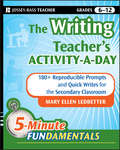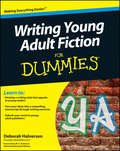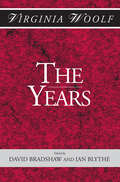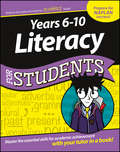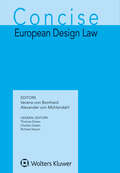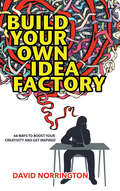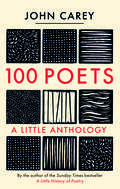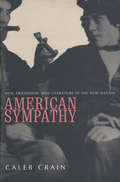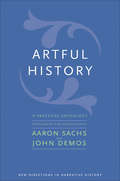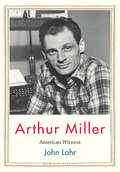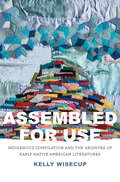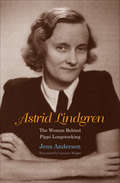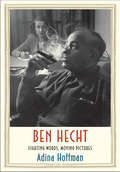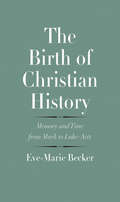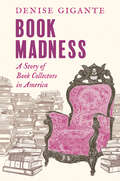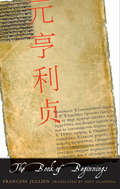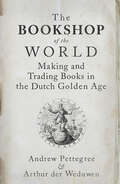- Table View
- List View
The Writing Teacher's Activity-a-Day: 180 Reproducible Prompts and Quick-Writes for the Secondary Classroom (JB-Ed: 5 Minute FUNdamentals #3)
by Mary Ellen LedbetterClassroom-tested methods for boosting secondary students' writing skills The Writing Teacher's Activity-a-Day offers teachers, homeschoolers, and parents 180 ready-to-use, reproducible activities that enhance writing skills in secondary students. Based on Ledbetter's extensive experience consulting to language arts teachers and school districts across the country, the classroom-tested activities included in this book teach students key literary and writing terms like allegory, elaboration, irony, personification, propaganda, voice, and more--and provide them with engaging examples that serve as models for their own Quick Writes. Contains writing prompts and sample passages in student-friendly language that connects abstract literary concepts to students' own lives Written by popular workshop presenter and veteran educator Mary Ellen Ledbetter Offers a user-friendly, value-packed resource for teaching writing skills Designed for English language arts teachers in grades 6-12, tutors, parents, learning specialists, homeschoolers, and consultants.
Writing Young Adult Fiction For Dummies
by Deborah HalversonYour hands-on, friendly guide to writing young adult fiction With young adult book sales rising, and bestselling authors like J.K. Rowling and Stephenie Meyer exploding onto the scene, aspiring YA writers are more numerous than ever. Are you interested in writing a young adult novel, but aren't sure how to fit the style that appeals to young readers? Writing Young Adult Fiction For Dummies gives you tricks of the trade and proven tips on all the steps to write a YA book, from developing an idea to publication. Unique writing exercises to help you find your own authentic teen voice Tips to avoid when submitting manuscripts How to break into the flourishing young adult market With the help of this step-by-step guide, you'll have all the skills to write an inspiring and marketable young adult novel.
Writing Young Adult Fiction For Dummies
by Deborah HalversonYour hands-on, friendly guide to writing young adult fiction With young adult book sales rising, and bestselling authors like J.K. Rowling and Stephenie Meyer exploding onto the scene, aspiring YA writers are more numerous than ever. Are you interested in writing a young adult novel, but aren't sure how to fit the style that appeals to young readers? Writing Young Adult Fiction For Dummies gives you tricks of the trade and proven tips on all the steps to write a YA book, from developing an idea to publication. Unique writing exercises to help you find your own authentic teen voice Tips to avoid when submitting manuscripts How to break into the flourishing young adult market With the help of this step-by-step guide, you'll have all the skills to write an inspiring and marketable young adult novel.
The Years: Large Print (Shakespeare Head Press Edition of Virginia Woolf #4)
by Virginia WoolfThis edition takes the first British edition of The Years as its copy-text, and includes a comprehensive introduction, extensive explanatory notes, and a full list of textual variants and editorial emendations. Features a comprehensive introduction, detailing the lengthy process of the composition and revision of the novel, and its subsequent publication history Includes extensive explanatory notes, highlighting the political, historical, social and literary contexts of the novel Provides a full account of the variants between the first British and American editions, supplemented by a list of editorial emendations made in this present edition
The Years (Shakespeare Head Press Edition of Virginia Woolf #3)
by Virginia WoolfThis edition takes the first British edition of The Years as its copy-text, and includes a comprehensive introduction, extensive explanatory notes, and a full list of textual variants and editorial emendations. Features a comprehensive introduction, detailing the lengthy process of the composition and revision of the novel, and its subsequent publication history Includes extensive explanatory notes, highlighting the political, historical, social and literary contexts of the novel Provides a full account of the variants between the first British and American editions, supplemented by a list of editorial emendations made in this present edition
Years 6-10 Literacy For Students
by Consumer DummiesYour tutor in a book! Master the essential literacy skills for success! 'I don't know how to do this' is a refrain heard whilst many a student is doing homework. Parents are increasingly called on for assistance, but are themselves struggling to help their children. Years 6-10 Literacy For Students is a reference guide for both students and parents, aiming to fill the gaps in a student's knowledge base, build confidence and reduce stress. Written with the same friendly, how-to approach of the successful For Dummies books, this new educational reference will empower students and develop their literacy skills for exams, NAPLAN testing and, most importantly, life beyond secondary school. With worries that students are being taught to pass tests at the expense of understanding — this guide will help students increase their understanding of grammar and writing. Master grammar and communicate ideas more effectively Improve writing and comprehension skills Complete homework and prepare for tests with confidence Save money on expensive tutors. Years 6-10 Literacy For Students empowers students to improve their educational outcomes.
Years 6-10 Literacy For Students
by Consumer DummiesYour tutor in a book! Master the essential literacy skills for success! 'I don't know how to do this' is a refrain heard whilst many a student is doing homework. Parents are increasingly called on for assistance, but are themselves struggling to help their children. Years 6-10 Literacy For Students is a reference guide for both students and parents, aiming to fill the gaps in a student's knowledge base, build confidence and reduce stress. Written with the same friendly, how-to approach of the successful For Dummies books, this new educational reference will empower students and develop their literacy skills for exams, NAPLAN testing and, most importantly, life beyond secondary school. With worries that students are being taught to pass tests at the expense of understanding — this guide will help students increase their understanding of grammar and writing. Master grammar and communicate ideas more effectively Improve writing and comprehension skills Complete homework and prepare for tests with confidence Save money on expensive tutors. Years 6-10 Literacy For Students empowers students to improve their educational outcomes.
Concise European Design Law (Concise IP Series #7)
The two EU instruments that govern design law – the Community Design Regulation (CDR) of 2001 and the Design Directive of 1998 – are expertly annotated in this thorough article-by-article commentary. Written by distinguished practitioners from a range of European countries, the volume builds on the two editions of the design-related portions of the much-relied-upon Concise European Trade Mark and Design Law, with corresponding case law through the end of 2022. It is the best first-stop guide to practice in the field. The commentary provides detailed guidance, taking into account the case law of the EUIPO and its Boards of Appeal and of the General Court and the Court of Justice, on the practical application of such crucial building blocks of design law practice as the following: all issues of substantive design law, from definitions to novelty and individual character, ownership of design rights, limits of protection, to scope of protection and rights conferred; all proceedings before the EUIPO, from filing design applications to registration, actions for declaration of invalidity, and all provisions governing review of EUIPO decisions, by the EUIPO Boards of Appeal, by the EU’s General Court, and by the Court of Justice; and actions for the infringement of Community designs, with a focus on jurisdiction and applicable law. The book also contains a unique collection of EU and international legislation of relevance for design protection, found in no other reference book, including the Community Design Implementing and Fee Regulations, the Enforcement of IP Rights Directive, excerpts from the Rules of Procedure of the General Court, and relevant provisions from applicable international treaties, such as the TRIPS Agreement, the Paris Convention, the Geneva Act of the Hague Agreement, and the Locarno Agreement. This concise book on designs is a handy desktop companion and single reference tool for daily use by every practitioner in the EU and elsewhere who practises design law. It will be welcomed by IP lawyers, in-house counsel, and government officials involved with design policy and procedure.
Build Your Own Idea Factory: 68 Ways to Overcome Creative Blocks, Generate New Ideas, and Get Inspired (Wordcatcher Personal Development)
by David NorringtonUNLOCK THAT BLOCK This book is a catalyst for creativity. It’s ideal for readers who are: Seeking new ideas for a creative project Struggling with a mental block This is suitable for: Authors, Writers, Bloggers, Satirists, Pinterest Pinners, YouTubers, Tweeters, Instagram and Facebook Posters, Poets, Artists, Illustrators, Sculptors, and other creative professionals. Use this as a resource during moments of frustration, blockage, or boredom, to kick-start your creative juices and get you creating again. David Norrington is a dad, author, publisher, photographer, speaker, and collector of labels.
Understand the publishing process, and finish writing your book in 12 weeks (Author Training Series #1)
by David NorringtonAccompanies the workshop. Covers the stages you'll need to consider before you start. This for you if you: >have been trying to finish your book but have blockages >want to write a book but don't know where to start >have an idea but are overwhelmed by what to include >want to understand the publishing process.
100 Poets: A Little Anthology
by John CareyA wonderfully readable anthology of our greatest poetry, chosen by the author of A Little History of Poetry A poem seems a fragile thing. Change a word and it is broken. But poems outlive empires and survive the devastation of conquests. Celebrated author John Carey here presents a uniquely valuable anthology of verse based on a simple principle: select the one-hundred greatest poets from across the centuries, and then choose their finest poems. Ranging from Homer and Sappho to Donne and Milton, Plath and Angelou, this is a delightful and accessible introduction to the very best that poetry can offer. Familiar favorites are nestled alongside marvelous new discoveries—all woven together with Carey’s expert commentary. Particular attention is given to the works of female poets, like Christina Rossetti and Charlotte Mew. This is a personal guide to the poetry that shines brightest through the ages. Within its pages, readers will find treasured poems that remain with you for life.
American Sympathy: Men, Friendship, and Literature in the New Nation
by Mr Caleb Crain"A friend in history,” Henry David Thoreau once wrote, "looks like some premature soul.” And in the history of friendship in early America, Caleb Crain sees the soul of the nation’s literature.In a sensitive analysis that weaves together literary criticism and historical narrative, Crain describes the strong friendships between men that supported and inspired some of America’s greatest writing--the Gothic novels of Charles Brockden Brown, the essays of Ralph Waldo Emerson, and the novels of Herman Melville. He traces the genealogy of these friendships through a series of stories. A dapper English spy inspires a Quaker boy to run away from home. Three Philadelphia gentlemen conduct a romance through diaries and letters in the 1780s. Flighty teenager Charles Brockden Brown metamorphoses into a horror novelist by treating his friends as his literary guinea pigs. Emerson exchanges glances with a Harvard classmate but sacrifices his crush on the altar of literature--a decision Margaret Fuller invites him to reconsider two decades later. Throughout this engaging book, Crain demonstrates the many ways in which the struggle to commit feelings to paper informed the shape and texture of American literature.
The Art of Dramaturgy
by Anne CattaneoAn introduction to the mysterious theater role of a dramaturg by a legend in the field Anne Cattaneo was among the first Americans to fill the role of dramaturg, one of theater’s best kept secrets. A combination of theater artist, scholar, researcher, play advocate, editor, and writer’s friend, it is the job of a dramaturg to “reflect light back on the elements that are already in play,” while bringing a work of theater to life. Cattaneo traces the field from its beginnings in the eighteenth century to the present and chronicles the multitude and variety of tasks a dramaturg undertakes before, during, and after a production is brought to the stage. Using detailed stories from her work with theater artists such as Tom Stoppard, Wendy Wasserstein, Robert Wilson, Shi-Zheng Chen, and Sarah Ruhl, as well as the discovery of a ‘lost’ play by Langston Hughes and Zora Neale Hurston, Cattaneo provides an invaluable manual to those studying, working in, and interested in this most fascinating profession.
The Art of Non-conversation: A Reexamination of the Validity of the Oral Proficiency Interview
by Marysia JohnsonThe Oral Proficiency Interview (OPI) is a widely accepted instrument for assessing second and foreign language ability. It is used by the Foreign Language Institute, the Defense Language Institute, Educational Testing Service, the American Council on the Teaching of Foreign Languages, and at many universities in the United States. The Art of Non-Conversation examines the components of speaking ability and asks whether the OPI is a valid instrument for assessing them.Marysia Johnson applies the latest insights from discourse and conversational analysis to determine the nature of the OPI’s communicative speech event and investigate its construct validity within Messick’s definition of validity. She discusses models of speaking ability-several communicative competence models, an interactional competence model, and a model of spoken interaction based on Vygotsky’s sociocultural theory of learning. Finally she proposes a new model to test language proficiency drawn from sociocultural theory, one that considers language ability to be reflective of the sociocultural and institutional contexts in which the language has been acquired.
The Art of Survival: France and the Great War Picaresque
by Libby MurphyThe First World War soldier has often been depicted as a helpless victim sacrificed by a ruthless society in the trenches of the Western Front. In fact, Libby Murphy reveals, French soldiers drew upon a long-standing European tradition to imagine themselves not as heroes or victims but as survivors. Murphy investigates how infantrymen and civilians attempted to make sense of the war while it was still in progress by reviving the picaresque, a literary mode in which unheroic protagonists are forced to fend for themselves in a chaotic and hostile world. By examining works by French and European novelists, journalists, graphic artists, cultural critics, and filmmakers—including Charlie Chaplin—Libby Murphy shows how the rich tradition of the European picaresque was uniquely appropriate for expressing anxieties provoked by modern, industrialized warfare.
Artful History: A Practical Anthology (New Directions in Narrative History)
by John Demos Aaron SachsA collection of memorable, stirring, and eloquent historical essays, designed to help any historian write more artfully Is there any reason that serious historical scholarship cannot receive literary expression? Isn’t it possible that the most committed empiricists and postmodernists might both achieve better results by thinking of writing as a craft, rather than just a means of packaging research? This book compiles some of the most compelling efforts to make history writing eloquent, stirring, and memorable, in the realms of both practice and theory. The authors included here prove the great potential of approaching the writing of history as a literary art, even as they retain a commitment to rigorous scholarship. The collection shows how historians can aspire to find a form that matches and enhances their substance, nudging readers toward what historian John Clive called the "spell that lingers in the memory and is conducive not just to reading but to rereading." With selections from: Jonathan Spence, Simon Schama, Saidiya Hartman, Wendy Warren, Jill Lepore, Louis Masur, Jane Kamensky, and John Demos, among others.
Arthur Miller: American Witness (Jewish Lives)
by John LahrA great theater critic brings twentieth-century playwright Arthur Miller’s dramatic story to life with bold and revealing new insights “New Yorker critic Lahr shines in this searching account of the life of playwright Arthur Miller. . . . It’s a great introduction to a giant of American letters.”—Publishers Weekly Distinguished theater critic John Lahr brings unique perspective to the life of Arthur Miller (1915–2005), the playwright who almost single-handedly propelled twentieth-century American theater into a new level of cultural sophistication. Organized around the fault lines of Miller’s life—his family, the Great Depression, the rise of fascism, Elia Kazan and the House Committee on Un-American Activities, Marilyn Monroe, Vietnam, and the rise and fall of Miller’s role as a public intellectual—this book demonstrates the synergy between Arthur Miller’s psychology and his plays. Concentrating largely on Miller’s most prolific decades of the 1940s, 1950s, and 1960s, Lahr probes Miller’s early playwriting failures; his work writing radio plays during World War II after being rejected for military service; his only novel, Focus; and his succession of award-winning and canonical plays that include All My Sons, Death of a Salesman, and The Crucible, providing an original interpretation of Miller’s work and his personality.
Assembled for Use: Indigenous Compilation and the Archives of Early Native American Literatures (The Henry Roe Cloud Series on American Indians and Modernity)
by Kelly WisecupA wide-ranging, multidisciplinary look at Native American literature through non-narrative texts like lists, albums, recipes, and scrapbooks Kelly Wisecup offers a sweeping account of early Native American literatures by examining Indigenous compilations: intentionally assembled texts that Native people made by juxtaposing and recontextualizing textual excerpts into new relations and meanings. Experiments in reading and recirculation, Indigenous compilations include Mohegan minister Samson Occom’s medicinal recipes, the Ojibwe woman Charlotte Johnston’s poetry scrapbooks, and Abenaki leader Joseph Laurent’s vocabulary lists. Indigenous compilations proliferated in a period of colonial archive making, and Native writers used compilations to remake the very forms that defined their bodies, belongings, and words as ethnographic evidence. This study enables new understandings of canonical Native writers like William Apess, prominent settler collectors like Thomas Jefferson and Henry Rowe Schoolcraft, and Native people who contributed to compilations but remain absent from literary histories. Long before current conversations about decolonizing archives and museums, Native writers made and circulated compilations to critique colonial archives and foster relations within Indigenous communities.
Astrid Lindgren: The Woman Behind Pippi Longstocking
by Jens AndersenThe first English†‘language biography of Astrid Lindgren provides a moving and revealing portrait of the beloved Scandinavian literary icon whose adventures of Pippi Longstocking have influenced generations of young readers all over the world. Lindgren’s sometimes turbulent life as an unwed teenage mother, outspoken advocate for the rights of women and children, and celebrated editor and author is chronicled in fascinating detail by Jens Andersen, one of Denmark’s most popular biographers. Based on extensive research and access to primary sources and letters, this highly readable account describes Lindgren’s battles with depression and her personal struggles through war, poverty, motherhood, and fame. Andersen examines the writer’s oeuvre as well to uncover the secrets to the books’ universal appeal and why they have resonated so strongly with young readers for more than seventy years.
Ben Hecht: Fighting Words, Moving Pictures (Jewish Lives)
by Adina HoffmanA vibrant portrait of one of the most accomplished and prolific American screenwriters, by an award-winning biographer and essayistHe was, according to Pauline Kael, “the greatest American screenwriter.” Jean-Luc Godard called him “a genius” who “invented 80 percent of what is used in Hollywood movies today.” Besides tossing off dozens of now-classic scripts—including Scarface,Twentieth Century, and Notorious—Ben Hecht was known in his day as ace reporter, celebrated playwright, taboo-busting novelist, and the most quick-witted of provocateurs. During World War II, he also emerged as an outspoken crusader for the imperiled Jews of Europe, and later he became a fierce propagandist for pre-1948 Palestine’s Jewish terrorist underground. Whatever the outrage he stirred, this self-declared “child of the century” came to embody much that defined America—especially Jewish America—in his time. Hecht's fame has dimmed with the decades, but Adina Hoffman’s vivid portrait brings this charismatic and contradictory figure back to life on the page. Hecht was a renaissance man of dazzling sorts, and Hoffman—critically acclaimed biographer, former film critic, and eloquent commentator on Middle Eastern culture and politics—is uniquely suited to capture him in all his modes.
Bigger: A Literary Life (Black Lives)
by Trudier HarrisA biography of Native Son’s Bigger Thomas that examines his continued relevance in debates over Black men and the violence of racism Bigger Thomas, the central figure in Richard Wright’s novel Native Son (1940), eludes easy categorization. A violent and troubled character who rejects the rules of society, Bigger is both victim and perpetrator, damaged by racism and segregation on the South Side of Chicago, seemingly raping and killing without regrets. His story has electrified readers for more than eight decades, and it continues to galvanize debates around representation, respectability, social justice, and racism in American life. In this book, distinguished scholar Trudier Harris examines the literary life of Bigger Thomas from his birth to the current day. Harris explores the debates between Black critics and Communist artists in the 1930s and 1940s over the “political novel,” the censorship of Native Son by white publishers, and the work’s initial reception—as well as interpretations from Black feminists and Black Power activists in the decades that followed, up to the novel’s resonance with the Black Lives Matter movement today. Bigger, Harris argues, represents the knotted heart of American racism, damning and unsettling, and still very much with us.
The Birth of Christian History: Memory and Time from Mark to Luke-Acts (The\anchor Yale Bible Reference Library)
by Eve-Marie BeckerThe first comprehensive account to explore the beginnings of early Christian history writing, tracing its origin to the Gospel of Mark and Luke-Acts When the Gospel writings were first produced, Christian thinking was already cognizant of its relationship to ancient memorial cultures and history-writing traditions. Yet, little has been written about exactly what shaped the development of early Christian literary memory. In this eye-opening new study, Eve-Marie Becker explores the diverse ways in which history was written according to the Hellenistic literary tradition, focusing specifically on the time during which the New Testament writings came into being: from the mid-first century until the early second century CE. While acknowledging cases of historical awareness in other New Testament writings, Becker traces the origins of this historiographical approach to the Gospel of Mark and Luke-Acts. Offering a bold new framework, Becker shows how the earliest Christian writings shaped “Christian” thinking and writing about history.
Book Madness: A Story of Book Collectors in America
by Denise GiganteThe fascinating history of American bookishness as told through the sale of Charles Lamb’s library in 1848 Charles Lamb’s library—a heap of sixty scruffy old books singed with smoke, soaked with gin, sprinkled with crumbs, stripped of illustrations, and bescribbled by the essayist and his literary friends—caused a sensation when it was sold in New York in 1848. The transatlantic book world watched as the relics of a man revered as the patron saint of book collectors were dispersed. Following those books through the stories of the bibliophiles who shaped intellectual life in America—booksellers, publishers, journalists, editors, bibliographers, librarians, actors, antiquarians, philanthropists, politicians, poets, clergymen—Denise Gigante brings to life a lost world of letters at a time when Americans were busy assembling the country’s major public, university, and society libraries. A human tale of loss, obsession, and spiritual survival, this book reveals the magical power books can have to bring people together and will be an absorbing read for anyone interested in what makes a book special.
The Book of Beginnings (The Margellos World Republic of Letters)
by François JullienHow can a person from a Western culture enter into a way of thinking as different as that of the Chinese? Can a person truly escape from his or her own cultural perspectives and assumptions? French philosopher François Jullien has throughout his career explored the distances between European and Chinese thought. In this fascinating summation of his work, he takes an original approach to the conundrum of cross-cultural understanding. Jullien considers just three sentences in their original languages. Each is the first sentence of a seminal text: the Bible in Hebrew, Hesiod’s Theogony in Greek, and the I Ching in Chinese. By dismantling these sentences, the author reveals the workings of each language and the ways of thought in which they are inscribed. He traces the hidden choices made by European reason and assumptions, discovering among other things what is not thought about. Through the lens of the Chinese language, Jullien offers, as always, a new and surprising view of our own Western culture.
The Bookshop of the World: Making and Trading Books in the Dutch Golden Age
by Andrew Pettegree Arthur der WeduwenThe untold story of how the Dutch conquered the European book market and became the world's greatest bibliophiles The Dutch Golden Age has long been seen as the age of Rembrandt and Vermeer, whose paintings captured the public imagination and came to represent the marvel that was the Dutch Republic. Yet there is another, largely overlooked marvel in the Dutch world of the seventeenth century: books. In this fascinating account, Andrew Pettegree and Arthur der Weduwen show how the Dutch produced many more books than pictures and bought and owned more books per capita than any other part of Europe. Key innovations in marketing, book auctions, and newspaper advertising brought stability to a market where elsewhere publishers faced bankruptcy, and created a population uniquely well-informed and politically engaged. This book tells for the first time the remarkable story of the Dutch conquest of the European book world and shows the true extent to which these pious, prosperous, quarrelsome, and generous people were shaped by what they read.
